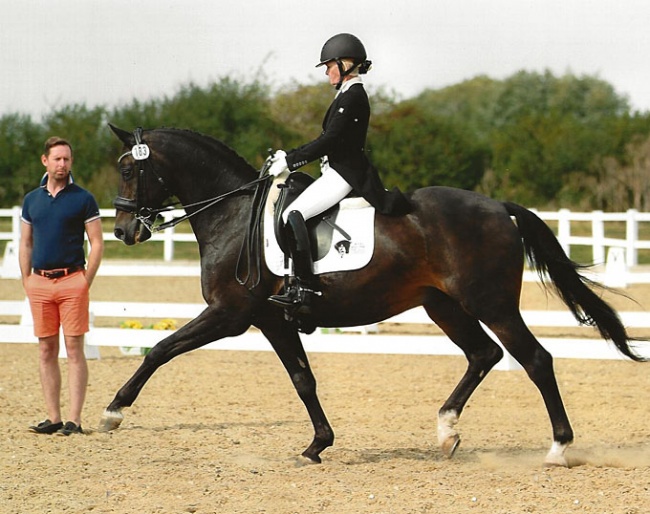
I am repeatedly asked, ‘how do you do it?’ Followed by an, ‘it’s amazing’. Such comments are gratefully received but no more deserved than the amazement I feel for what the expert eye can see. I marvel that good trainers can instruct more softness in the poll, or to engage more from behind, etc by evaluating every muscle and stride, sometimes from 60 metres away. That is skill I will never have.
I guess that what one person finds amazing is taken for granted by another. What I find natural, such as navigating my way around the arena to the sound of letters being called, others see as a feat. Ironically, the difficulties and frustrations that really challenge me often go overlooked. I am more worried about finding my way around a show ground using a white stick, feeling self -conscious and different, than I am coping with the obvious dangers of the collecting ring. How mad is that? When the collecting ring can be like a gladiatorial battle even though I am always on a mic.
I consider myself primarily as a rider, secondarily as blind; as does my trainer, Daniel Watson, who I have worked with for 8 years. This means that most of the time I train like anyone else. I have a sense of the arena size fixed in my head. I see light, not shape, in one eye and nothing in the other. The entrance light in our indoor at home tells me where M is, and my Dan’s voice comes from C. If I am riding a circle, 90% of the time we are working on bend or shoulder fore, not whether the circle is precisely at E or S. I am riding patterns and concentrating on our way of going like anyone else. Yes, I wish I could use the mirrors as I would become more self-reliant quicker than trying to build the right feel through verbal feedback. Yes, I would like to position a half pass by looking between the horse’s ears at the letter. I wish... Learning takes me longer as we are finding our way through some extra difficulties with no map. For example, tempi changes have been tortuous because I struggle how to know what straight is. At least, I am working the pirouettes and the tempis etc even if I sometimes feel frustrated by the time and repetition it takes me, or by the feeling I am trying to overcome the impossible.
Training time spent on navigation is therefore minimal. We do have a system that we practice a bit in the lead up to competition for certain test movements. The inter 1 shoulder in on the centre line, the PSG canter half passes and finishing a canter pirouette on the right line need me to tune in to Dan’s voice, not just the horse. But the accuracy is the polish after hours of scraping mud of the boots! It is proven that the human ear will never locate something as precisely as the human eye. I am therefore realistic about how perfect my centre lines can ever be. What I lack in accuracy, I must make up for in expression. So again, it comes down to learning to ride better.
So, what is really hard is not being able to watch other riders train and compete. I can listen to footfall and gauge rhythm or listen to commentaries; and I do. I can’t learn by watching the little adjustments that make all the difference. How does someone sit, carry their hand, use their leg, alter the tempo? I would love to be a visual learner in this sport and instead I don’t know what a piaffe looks like. So, my goal has to be to feel it - all the way to Grand Prix.
-- by Nicola Naylor
Blind British grade IV para rider Nicola Naylor is competing in both able bodied and para dressage, alongside being a Mother and company director living in London. Having finished 2019 by winning the Keysoe CPEDI 3* individual test and all three 2* tests on a second horse, the 2020 Tokyo trail is in sight. She has alsoo achieved the required scores for small tour selection so her goal is to compete in a CDI for Great Britain this year and be the first blind rider to do so.